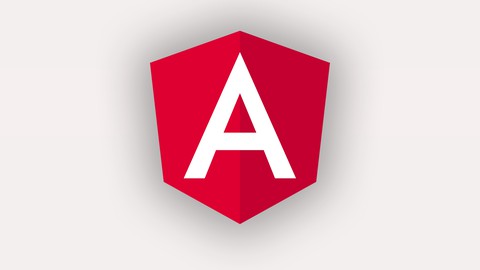
ANGULAR – BEYOND FUNDAMENTALS – PART I
ANGULAR – BEYOND FUNDAMENTALS – PART I, available at Free, has an average rating of 4.81, with 21 lectures, based on 282 reviews, and has 6582 subscribers.
You will learn about What is a component and why components are important Child and parent components, component life cycles, and best practices. Directives, text interpolation, built-in and custom pipes, one-way binding, two-way and event binding Built-in directives, attribute directives, and structural directives This course is ideal for individuals who are Basic HTML, CSS and JavaScript or Typescript knowledge or You do not need any experience with Angular or any other JS framework! It is particularly useful for Basic HTML, CSS and JavaScript or Typescript knowledge or You do not need any experience with Angular or any other JS framework!.
Enroll now: ANGULAR – BEYOND FUNDAMENTALS – PART I
Summary
Title: ANGULAR – BEYOND FUNDAMENTALS – PART I
Price: Free
Average Rating: 4.81
Number of Lectures: 21
Number of Published Lectures: 21
Number of Curriculum Items: 21
Number of Published Curriculum Objects: 21
Original Price: Free
Quality Status: approved
Status: Live
What You Will Learn
- What is a component and why components are important
- Child and parent components, component life cycles, and best practices.
- Directives, text interpolation, built-in and custom pipes, one-way binding, two-way and event binding
- Built-in directives, attribute directives, and structural directives
Who Should Attend
- Basic HTML, CSS and JavaScript or Typescript knowledge
- You do not need any experience with Angular or any other JS framework!
Target Audiences
- Basic HTML, CSS and JavaScript or Typescript knowledge
- You do not need any experience with Angular or any other JS framework!
In this course, you will find all you need to know to build a production-ready web application using Angular.
You will start with an introduction to Angular, the application that you will build, and also the default Angular project file structure. You will then publish the Angular app to a GitHub repository and learn about the GitHub repository structure that you will follow.
If we were to group everything that you are going to learn into some categories then we would have four categories and each category:
Components
Angular is a component-based framework so you can imagine that this is also the most important section of this course since it’s going to teach you the real fundamentals of this framework.
Here you will learn:
-
What is a component
-
Importance of components
-
Child and parent components
-
Component life-cycles
-
Best practices
Templates
In Angular, a template is a blueprint for a fragment of a user interface (UI). Templates are written in HTML, and special syntax can be used within a template to build on many of Angular’s features.
Here you will learn:
-
Text interpolation
-
Pipes
-
Bindings
-
One-way binding
-
Two-way binding
-
Event binding
-
Class and style binding
-
Directives
Directives are classes that add additional behavior to elements in your Angular applications.
Here you will learn:
-
Built-in directives
-
Attribute directives
-
Structural directives
Course Curriculum
Chapter 1: Introduction
Lecture 1: What you will learn
Lecture 2: What you should know
Lecture 3: Introduction to Angular
Lecture 4: Setting up Angular development environment
Lecture 5: Angular project file structure
Lecture 6: Publishing an Angular project to a GitHub repository
Chapter 2: Angular Components
Lecture 1: What is a component?
Lecture 2: Creating a new component
Lecture 3: Generating all application components
Lecture 4: Nesting components
Lecture 5: Component lifecycles
Chapter 3: Data binding | Displaying data and event handling
Lecture 1: Introduction
Lecture 2: Text interpolation
Lecture 3: Built-in pipes
Lecture 4: Custom pipes
Lecture 5: Property binding
Lecture 6: Attribute binding
Lecture 7: Class and style binding
Lecture 8: Event binding
Lecture 9: Template variables
Lecture 10: Two-way data binding
Instructors
-
Ervis Trupja
Instructor | Web Developer
Rating Distribution
- 1 stars: 2 votes
- 2 stars: 2 votes
- 3 stars: 22 votes
- 4 stars: 88 votes
- 5 stars: 168 votes
Frequently Asked Questions
How long do I have access to the course materials?
You can view and review the lecture materials indefinitely, like an on-demand channel.
Can I take my courses with me wherever I go?
Definitely! If you have an internet connection, courses on Udemy are available on any device at any time. If you don’t have an internet connection, some instructors also let their students download course lectures. That’s up to the instructor though, so make sure you get on their good side!
You may also like
- Top 10 Video Editing Courses to Learn in November 2024
- Top 10 Music Production Courses to Learn in November 2024
- Top 10 Animation Courses to Learn in November 2024
- Top 10 Digital Illustration Courses to Learn in November 2024
- Top 10 Renewable Energy Courses to Learn in November 2024
- Top 10 Sustainable Living Courses to Learn in November 2024
- Top 10 Ethical AI Courses to Learn in November 2024
- Top 10 Cybersecurity Fundamentals Courses to Learn in November 2024
- Top 10 Smart Home Technology Courses to Learn in November 2024
- Top 10 Holistic Health Courses to Learn in November 2024
- Top 10 Nutrition And Diet Planning Courses to Learn in November 2024
- Top 10 Yoga Instruction Courses to Learn in November 2024
- Top 10 Stress Management Courses to Learn in November 2024
- Top 10 Mindfulness Meditation Courses to Learn in November 2024
- Top 10 Life Coaching Courses to Learn in November 2024
- Top 10 Career Development Courses to Learn in November 2024
- Top 10 Relationship Building Courses to Learn in November 2024
- Top 10 Parenting Skills Courses to Learn in November 2024
- Top 10 Home Improvement Courses to Learn in November 2024
- Top 10 Gardening Courses to Learn in November 2024






















